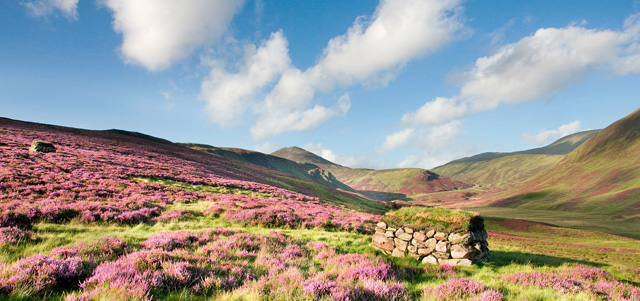Charles Quest-Ritson looks at how heather has gone out of fashion — and wonders what we can do about it.
Back in April, an article in The Times caught my eye. It bemoaned the declining popularity of heathers. Specialist growers, said a spokesman for the Heather Society, are closing down because of falling demand. Kingfisher Nursery in Spalding, Lincolnshire, used to produce nearly one million heather plants a year for the plant-centre trade, but was closed down in June 2017. Scottish nurseries that once stocked 140 varieties now offer no more than 30.
It’s a common complaint, and not peculiar to heathers. Plants go in and out of fashion just as everything else does. The specialist plant societies ask why their particular horticultural passion is shared by fewer and fewer co-religionists.
If only they knew, they tell themselves, why heathers or roses, irises or violas were less popular than they used to be, it would be possible to do something about it.
I’m not so sure: changes of fashion are tied in with much more fundamental movements, such as the desire to travel, to experience excitement and even to visit and enjoy gardens without the faff of having to make one. We may no longer grow heathers, but our hearts still leap up when we see a moorland purple with Calluna vulgaris in August.

The biggest casualty so far has been the Royal National Rose Society. In the 1960s, it boasted 120,000 members, more then than the RHS. When, at last, in 2017, burdened by pension holidays and years of bad governance, it called in the administrators, its membership was reduced to about 1,000. Its successor society has fewer than 100 members.
Meanwhile, the RHS has gone from strength to strength, provided you measure that in terms of turnover. It now has 500,000 members and, in order to accommodate this larger membership base, has moved downmarket. This is not an option for a specialist plant organisation such as the Heather Society, whose existence is posited on the need for experts to know each other and share their wisdom, experience and enthusiasm.
The figures are stark. In 1985, the Heather Society had about 1,500 members. By 2000, the numbers were halved and, now, it stands at no more than 150. The membership is ageing — all its council members are over 60 and most are over 70 — and, although the society does now have a few younger members, they cannot afford the time to help with running it.
Heathers were widely promoted in the 1970s by Adrian Bloom at Bressingham Gardens. They were low-upkeep plants that combined well with conifers to provide year-round colour in return for minimum skill and labour — but all plants need maintenance. The conifers spread out and the heathers became straggly and woody through lack of pruning.
The influencers — garden writers and presenters — considered heathers dull and old-fashioned, which reduced their exposure in the gardening press and on the screen. Out they went, replaced by lavenders, David Austin roses, clematis and herbaceous plants. Today’s journalists continue to ignore heathers, either because they don’t know them or don’t like them.

Climate change is having a devastating impact on English heather
As for the nurseries, David Edge, the Heather Society’s chairman, attributes their demise to price undercutting by a major northern grower that itself eventually failed. Half a dozen nurseries still produce heathers, but their range is greatly reduced. Ten years ago, the Scottish collection at Cherrybank in Perth boasted 900 cultivars.
Many of the older varieties have already become extinct. It’s not only our horticultural diversity that suffers: when we lose old cultivars, we lose a part of our wider history. Only the winter-flowering species, Erica carnea and E. x darleyensis, are still widely available, largely because they grow in almost any soil and provide colour at a time when there is little else in the garden.
Next year, the Heather Society plans to relinquish its charitable status — being a charity requires time-consuming work. It will continue to exist, at least for the time being, as a website-based organisation.
Others will follow: the internet has made the need for many specialist plant societies redundant. There will be exceptions, but what we’re seeing now reflects the general changes to how we do things that the worldwide web has brought about.
However, it should still be possible for societies to fulfil their most important role by putting enthusiasts in touch with like-minded devotees to share their knowledge, learn from each other’s experiences and enjoy each other’s company.
You can find out more about the Heather Society at www.heathersociety.org.




